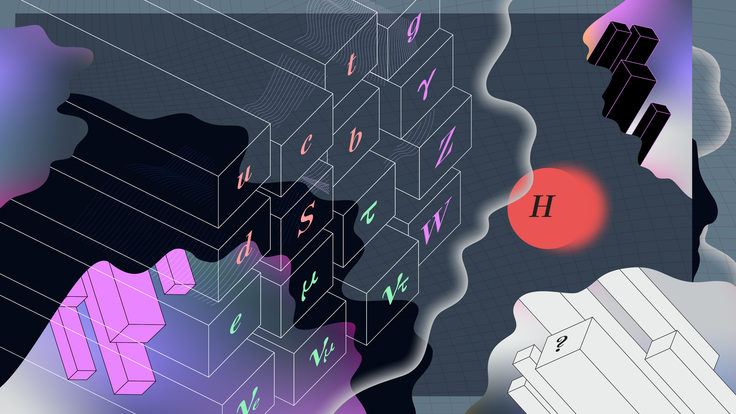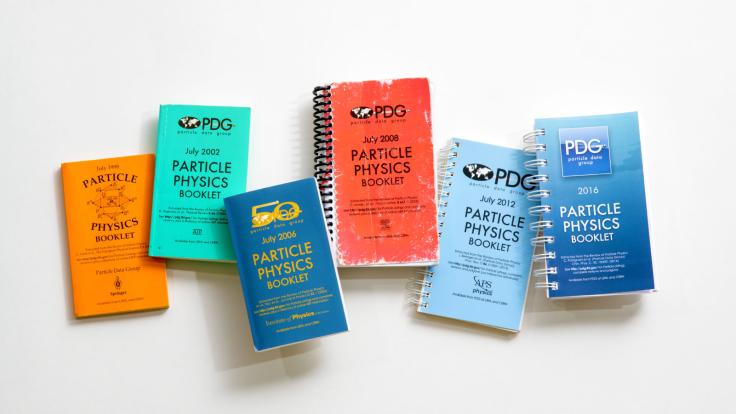The Higgs boson has existed since the earliest moments of our universe. Its directionless field permeates all of space and entices transient particles to slow down and burgeon with mass. Without the Higgs field, there could be no stable structures; the universe would be cold, dark and lifeless.
Many scientists are hoping that the Higgs boson will help them understand phenomena not predicted by the Standard Model, physicists’ field guide to the subatomic world. While the Standard Model is an ace at predicting the the properties of all known subatomic particles, it falls short on things like gravity, the accelerating expansion of the universe, the supernatural speeds of spinning galaxies, the absurd excess of matter over antimatter, and beyond.
“We can use the Higgs boson as a tool to look for new physics that might not readily interact with our standard set of particles,” says Darin Acosta, a physicist at the University of Florida.
In particular, there’s hope that the Higgs boson might interact with dark matter, thought to be a widespread but never directly detected kind of matter that outnumbers regular matter five to one. This theoretical massive particle makes itself known through its gravitational attraction. Physicists see its fingerprint all over the cosmos in the rotational speed of galaxies, the movements of galaxy clusters and the bending of distant light. Even though dark matter appears to be everywhere, scientists have yet to find a tool that can bridge the light and dark sectors.
If the Higgs field is the only vendor of mass in the cosmos, then dark matter must be a client. This means that the Higgs boson, the spokesparticle of the Higgs field, must have some relationship with dark matter particles.
“It could be that dark matter aids in the production of Higgs bosons, or that Higgs bosons can transform into dark matter particles as they decay,” Acosta says. “It’s simple on paper, but the challenge is finding evidence of it happening, especially when so many parts of the equation are completely invisible.”
The particle that wasn’t there
To find evidence of the Higgs boson flirting with dark matter, scientists must learn how to see the invisible. Scientists never see the Higgs boson directly; in fact, they discovered the Higgs boson by tracing the particles it produces as it decays. Now, they want to precisely measure how frequently the Higgs boson transforms into different types of particles. It’s not easy.
“All we can see with our detector is the last step of the decay, which we call the final state,” says Will Buttinger, a CERN research fellow. “In many cases, the Higgs is not the parent of the particles we see in the final state, but the grandparent.”
The Standard Model not only predicts all the different possible decays of Higgs bosons, but how favorable each decay is. For instance, it predicts that about 60 percent of Higgs bosons will transform into a pair of bottom quarks, whereas only 0.2 percent will transform into a pair of photons. If the experimental results show Higgs bosons decaying into certain particles more or less often than predicted, it could mean that a few Higgs bosons are sneaking off and transforming into dark matter.
Of course, these kinds of precision measurements cannot tell scientists if the Higgs is evolving into dark matter as part of its decay path—only that it is behaving strangely. To catch the Higgs in the act, scientists need irrefutable evidence of the Higgs schmoozing with dark matter.
“How do we see invisible things?” asks Buttinger. “By the influence it has on what we can see.”
For example, humans cannot see the wind, but we can look outside our windows and immediately know if it’s windy based whether or not trees are swaying. Scientists can look for dark matter particles in a similar way.
“For every action, there is an equal and opposite reaction,” Buttinger says. “If we see particles shooting off in one direction, we know that there must be something shooting off in the other direction.”
If a Higgs boson transforms into a visible particle paired with a dark matter particle, the solitary tracks of the visible particles will have an odd and inexplicable trajectory—an indication that, perhaps, a dark matter particle is escaping.
The Higgs boson is the newest tool scientists have to explore the uncharted terrain within and beyond the Standard Model. The continued research at the LHC and its future upgrades will enable scientists to characterize this reticent particle and learn its close-held secrets.













